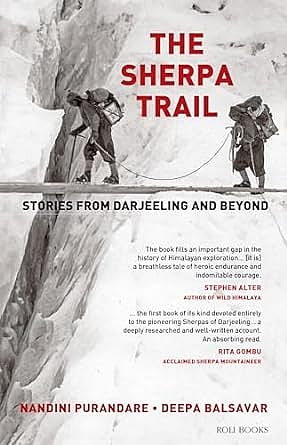The Sherpa Saga

The ascent of Mt. Everest on May 29, 1953, was a landmark event that received attention and adulation in equal measure. The highest mountain in the world had seen multiple attempts since the first in 1921, a mighty endeavour in terms of resources the forays had often ended in disappointment and far worse, loss of life.
When the summit of Everest was finally attained, Edmund Hillary and Tenzing Norgay became household names and continue to be celebrated, both in the world of mountaineering and outside of it. But that British expedition led by master planner John Hunt had equally brilliant climbers, who all made vital contributions to pave the path to the summit of Everest.
Like Hillary, there were the likes of George Band and Charles Evans, who went on to make the first ascent of Kangchenjunga, the third highest mountain, a few years later. And like Norgay, there were equally bold high-altitude porters like Ang Nima and Dawa Thondup, who did the heavy lifting to make the summit bid possible but are today relegated to expedition reports and Sherpa folklore.
The exploits of the latter are relived in The Sherpa Trail by Nandini Purandare and Deepa Balsavar. Their book delves into the lives of these forgotten heroes, who crossed high passes and yawning valleys to start a new life in Darjeeling. And how they’ve inspired the next generation of Sherpas to continue the tradition and leave their mark on some of the highest mountains of the world.
2026 New Year Issue
Essays by Shashi Tharoor, Sumana Roy, Ram Madhav, Swapan Dasgupta, Carlo Pizzati, Manjari Chaturvedi, TCA Raghavan, Vinita Dawra Nangia, Rami Niranjan Desai, Shylashri Shankar, Roderick Matthews, Suvir Saran
Darjeeling became the starting point for most Himalayan expeditions in the early 1900s, at a time when the kingdom of Nepal was still off limits to foreigners. Enterprising men from the Sherpa community of Solu Khumbu in Nepal moved here in search of portering work. The British soon found them to be worthy companions at altitude. They could climb high while hauling heavy loads and were found to be most reliable in this hostile environment.
As the race for the 8,000 metre mountains picked up pace, it needed more of these capable men to aid the ambitious, large-scale expeditions. In turn, the Sherpa community in Darjeeling grew, some arriving as teenagers with their meagre belongings and a dream to earn a living.
As part of their research, the Mumbai-based authors set out for Darjeeling in search of these legendary climbers. Most were deceased. The authors stitched their journey through the accounts of others; a few they met during their final days. What they’ve put together is a treasure trove of intimate personal accounts that highlight the ambitions of these hardy men, who came from humble backgrounds to make the most of the few opportunities that came their way. And through their exploits, the authors chronicle the rich climbing history of the Himalayas.
The book traces the glory days of the Sherpas and the tribulations that unfolded in the lives of others who were too soon consigned to oblivion. It highlights the price of fame that Tenzing Norgay had to endure after his success on Everest. And why the future generation of Sherpas from the original families of Darjeeling have stayed away from mountaineering.
The epicentre of climbing has long moved from Darjeeling to Kathmandu. But a lot remains the same even today. Sherpas continue to be the backbone of commercial expeditions. The lucrative nature of their profession is still a lure and at times, enough compensation for the uncertainties of the high mountains.
It’s what continues to draw a new generation of Sherpas from the remote Makalu region of Nepal to Darjeeling in search of employment. And like their predecessors, they too look for new climbing challenges to raise their status, while hoping that the next generation doesn’t have to follow in their footsteps.
The narrative is a compilation of archival reports, the nostalgic memories of surviving Sherpas and other families in Darjeeling, and the authors’ personal experience while forging deep bonds with the community. It isn’t one of those reads that will transport you to the ethereal heights of the snow mountains. Instead, it will take you through the winding lanes of Toong Soong and Alubari in Darjeeling, and into the intriguing lives of a few good men, and those who knew them best. A must-read for the mountaineering aficionado, one absorbing account at a time.

